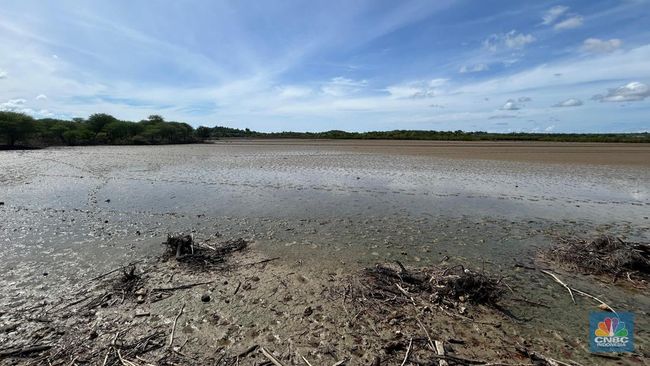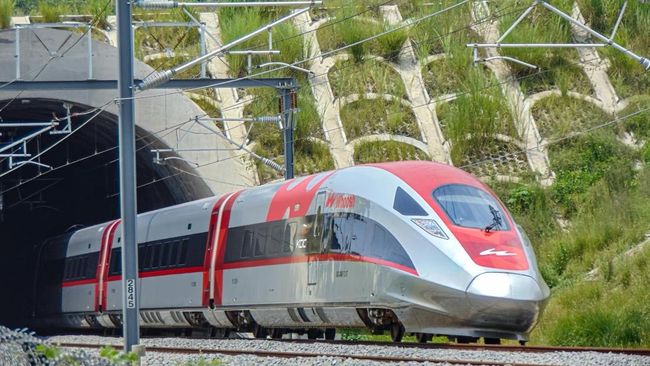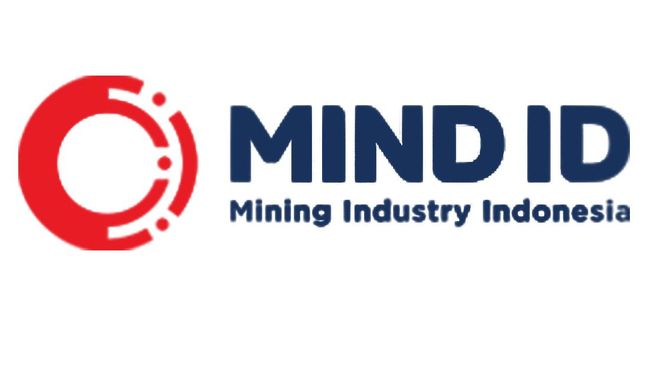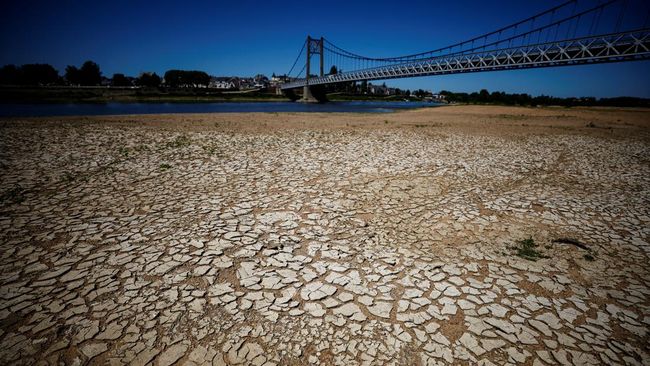Catatan: Artikel ini merupakan opini pribadi penulis dan tidak mencerminkan pandangan Redaksi CNBCIndonesia.com
The global economy is at a turning point. Trade wars, geopolitical tensions, and the lingering effects of the COVID-19 pandemic have created a volatile environment.
The recent tariff agreement between the United States and China may have eased tensions temporarily, but it does not mark the end of economic uncertainty. Instead, it underscores the importance of sound policy choices-choices that will determine whether nations merely survive or thrive in this new era.
History reminds us that economic conflict often precedes broader crises. In the 1930s, escalating trade barriers and protectionism didn't just deepen the Great Depression-they helped set the stage for global conflict.
Today, we face a similar convergence of economic and political risks: inflationary pressures, stagnating growth in developed economies, volatility in trade balances, and depreciating currencies. Countries like Germany and New Zealand have already entered recession.
The United States and China are slowing. And all of this is happening while the world is still recovering from the economic trauma of the pandemic.
In this climate, policy choices matter more than ever. The decisions made today will determine whether nations merely endure the storm-or emerge stronger on the other side.
The Case for Supply-Side Economics
The right response to economic uncertainty is not more government intervention-it's more economic freedom. It's time to return to the principles of supply-side economics, which emphasize the power of incentives to drive growth, innovation, and prosperity.
At the heart of supply-side thinking is a simple but powerful idea: people respond to incentives. When tax rates are too high or regulations too burdensome, economic activity slows. Investment dries up. Innovation stalls. Jobs disappear.
The Laffer Curve illustrates this dynamic: beyond a certain point, higher tax rates actually reduce government revenue by discouraging the very activity that generates taxable income.
We've seen this principle in action. Countries like Ireland and Singapore have embraced low, efficient tax regimes and pro-growth policies-and the results speak for themselves. These nations didn't grow by taxing more. They grew by creating environments where businesses could thrive and individuals were rewarded for working, saving, and investing.
These countries have seen how imposing higher tax rates does not automatically translate to higher revenue. In fact, lower tax rates can encourage work, production, and job creation - thereby expanding the tax base and generating greater overall revenue by stimulating economic activity.
 Foto: The Laffer Curve. (Dokumentasi Dr. Arthur B. Laffer)
Foto: The Laffer Curve. (Dokumentasi Dr. Arthur B. Laffer)
● At a 0% tax rate, the government collects no revenue, regardless of the size of the tax base.
● At a 100% tax rate, the government also collects no revenue, because no one is willing to work if all income is confiscated - thus eliminating the tax base altogether.
Using the Laffer Curve as a reference, Indonesia needs to review and identify regulatory gaps, particularly in tax policies, to better support growth.
Indonesia's Strategic Opportunity
Indonesia is uniquely positioned to benefit from a supply-side approach. While many countries are deeply exposed to global trade shocks, Indonesia's exports account for just 25% of its GDP.
That's significantly lower than export-heavy economies like Singapore or Vietnam. This relative insulation gives Indonesia a rare opportunity to chart its own course-one that leverages its strengths and positions it for long-term growth.
The ongoing U.S.-China trade war is prompting a global reconfiguration of supply chains. Companies are looking for new manufacturing hubs that offer stability, favorable trade terms, and a skilled workforce. Indonesia checks all the boxes: a large and increasingly productive working-age population, a growing digital economy, and a strategic location in Southeast Asia.
But opportunity alone is not enough. To seize this moment, Indonesia must act decisively.
What Indonesia Should Do
First, Indonesia must streamline its regulatory environment. Excessive bureaucracy and rigid local content requirements deter investment and stifle competitiveness.
Deregulating these areas would send a powerful signal to global investors that Indonesia is open for business. Indonesia has already started the process of deregulation and should continue in earnest.
Second, Indonesia should pursue strategic trade agreements that diversify its economic partnerships and reduce dependency on any single market. In a world where protectionism is on the rise, Indonesia must position itself as a reliable and attractive alternative.
Third, and most importantly, Indonesia must protect and strengthen its existing economic pillars. This includes natural resource exports like oil, gas, and palm oil, as well as domestic manufacturing sectors such as tobacco. These industries are not just revenue generators-they are job creators, economic multipliers, and vital components of Indonesia's fiscal stability.
Fixing Fiscal Policy: A Supply-Side Imperative
In 2024, Indonesia's tax revenue reached IDR 1,932.4 trillion, or approximately 68% of total state income. This included Value-Added Tax (VAT), Income Tax, import duties, and excise taxes.
Despite this substantial contribution, Indonesia's tax-to-GDP ratio has been declining - from 11,4% in 2014 to just 8,7% in 2024. This is not a sign of under-taxation-it's a sign of a narrow tax base and inefficient policy design. The solution is not to raise rates. It's to broaden the base, simplify the system, and get the incentives right.
Take excise taxes. Today, Indonesia imposes excise on just a handful of products: tobacco, alcoholic beverages, and ethanol. Sugar-sweetened beverages (SSBs) have been added to the list, but not yet taxed. This narrow focus is risky and unsustainable.
Tobacco contributes nearly 95% of Indonesia's excise revenue. Yet the sector is overburdened. As I've outlined in my Handbook of Tobacco Taxation, excessive taxation can be counterproductive.
It encourages downtrading, affecting government revenue, reduces legal sales, encourages illicit trade, and harms employment in labor-intensive industries. Such trends can be observed in Indonesia as well as in other regional neighbours like the Philippines, Thailand and Pakistan. If this continues, this will put the Government, the society, and the industry in a net-loss situation.
Indonesia must review its tobacco excise structure to ensure it remains outside of the prohibitive range of the Laffer Curve. Efficient taxation-not excessive taxation-protects revenue, supports jobs, and prevents economic leakage. It also ensures that fiscal policy serves as a stable tool for growth, not an unpredictable barrier to it.
Moreover, Indonesia should diversify its excise revenue sources. Relying too heavily on a single sector is risky. A broader, more balanced excise framework would enhance fiscal resilience and reduce volatility.
Innovation and Technology: The Next Growth Engine
Indonesia's ambition to achieve 8% economic growth is bold-and achievable. But it won't happen by taxing more. It will happen by growing more. That growth starts with strengthening the backbone of the economy: traditional sectors like mining, agriculture, food and beverage, and tobacco. These industries don't just provide jobs for millions-they generate substantial tax revenue, provide valuable goods to the world market and keep the economic engine running.
But to truly unlock Indonesia's potential, we must also look forward. That means embracing innovation, investing in new technologies, and building the next generation of growth drivers. It's not about choosing between old and new-it's about empowering both to thrive.
The government's success in promoting electric vehicles (EVs) is a case in point. Favorable regulations spurred investment, and catalyzed domestic manufacturing. This is supply-side policy in action: using smart regulation to create incentives for innovation and growth.
The same approach can be applied to other sectors. A risk-appropriate regulatory framework for alternative tobacco products, for example, can support public health goals while preserving economic value. More broadly, fiscal policy should be seen as a catalyst for innovation, not just a tool for revenue collection.
Countries that have embraced this mindset-using tax policy to encourage R&D, investment, and entrepreneurship-have reaped the rewards. Indonesia can do the same.
Indonesia stands at a crossroads. The global economy is shifting. Protectionism is rising. But with the right policies, Indonesia can turn this moment of uncertainty into a springboard for growth.
Here's the roadmap:
● Simplify and optimize tax policy
● Protect key economic contributors and revenue generating sectors like palm oil, mining, oil and gas, tobacco and manufacturing
● Encourage innovation through smart regulation
● Expand the tax base without raising rates
● Use fiscal policy as a driver of growth, not just a collector of revenue
Growth is not a mystery. It's a matter of incentives. And the future belongs to those who create the conditions for prosperity.
As I've said for decades: you can't tax an economy into prosperity. But you can incentivize it to grow.
(miq/miq)































:strip_icc():format(jpeg)/kly-media-production/medias/5188944/original/032874400_1744718583-Timnas_Indonesia_U-17_-_Dafa_Al_Gasemi__Putu_Panji__Evandra_Florasta__Fadly_Alberto__Zahaby_Gholy_copy.jpg)
:strip_icc():format(jpeg)/kly-media-production/medias/4911925/original/076855200_1723030677-BRI_LIGA_1_-_Ilustrasi_Trofi_dan_Logo_Klub_BRI_Liga_1_Musim_2024_2025_copy.jpg)
:strip_icc():format(jpeg)/kly-media-production/medias/5094338/original/041658700_1736847302-Timnas_Indonesia_-_Ilustrasi_Patrick_Kluivert__Strategy_Board_Formasi_4-3-3_copy.jpg)
:strip_icc():format(jpeg)/kly-media-production/medias/4884798/original/003422400_1723029847-BRI_LIGA_1_-_Ilustrasi_Logo_Klub_BRI_Liga_1_Musim_2024_2025_copy.jpg)
:strip_icc():format(jpeg)/kly-media-production/medias/5059110/original/077795800_1734691773-Ilustrasi_-_Emil_Audero_copy.jpg)
:strip_icc():format(jpeg)/kly-media-production/medias/4966783/original/039299900_1728662342-Timnas_Indonesia_-_Ilustrasi_Rafael_Struick_copy.jpg)
:strip_icc():format(jpeg)/kly-media-production/medias/5141541/original/089965900_1740371232-photo-collage.png__7_.jpg)
:strip_icc():format(jpeg)/kly-media-production/medias/3296237/original/082113900_1605340998-Timnas_Indonesia_-_Victor_Igbonefo__Greg_Nwokolo__Osas_Saha.jpg)
:strip_icc():format(jpeg)/kly-media-production/medias/5139035/original/077808800_1740052341-Timnas_Indonesia_-_Patrick_Kluivert_didampingi_Rayhan_Hannan__Calvin_Verdonk__Ole_Romeny_copy.jpg)

:strip_icc():format(jpeg)/kly-media-production/medias/4916031/original/069518800_1723457399-BRI_LIGA_1_-_Ilustrasi_Logo_BRI_Liga_1_Musim_2024_2025_copy.jpg)
:strip_icc():format(jpeg)/kly-media-production/medias/5115541/original/073375200_1738311032-Ilustrasi_-_Emil_Audero_copy.jpg)

:strip_icc():format(jpeg)/kly-media-production/medias/5128588/original/047508200_1739253453-Dewa_United_-_Alex_Martins__Jan_Olde_Riekerink__Egy_Maulana_Vikri_copy.jpg)

:strip_icc():format(jpeg)/kly-media-production/medias/5031231/original/064369900_1733050592-Nathan.jpg)
:strip_icc():format(jpeg)/kly-media-production/medias/3384724/original/050848100_1614067943-a000_P74LJ.jpg)

:strip_icc():format(jpeg):watermark(kly-media-production/assets/images/watermarks/bola/watermark-color-landscape-new.png,1125,20,0)/kly-media-production/medias/4519909/original/058544700_1690781416-20230714BL_Stok_Foto_Persib_Bandung_Vs_Dewa_United_50.jpg)